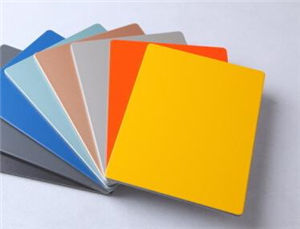
The joint treatment of aluminum-plastic panels can be summarized into two categories, one is to hide the fixed point, and the other is to allow the fixed point to be exposed.
1. Preliminary work:
(1). Check the quality of the skeleton first, focus on checking the straightness of the boom, uniform force, and the distance between the keels is no more than 500mm. If it is a humid environment, the design requires that the distance be appropriately reduced, and the lower surface of the keel is smooth without falling feeling, and the main and accessories are tightly connected. It can be bound only if it is firm and qualified. The cutting of the board should be broken along the cutting, so that the edges of the cutting board are straight and square, without defects such as missing corners.
(2). When the plank is fixed, lay the side of the aluminum-plastic board (encapsulation side) perpendicular to the supporting keel, and there must be a hanging phenomenon under the right. Aluminium-plastic panels should be tightly butt jointed, but they should not be forced into place. They can start from one corner or the middle row. They should not be laid at the same time. The seams should be straight, consistent in width and narrow, and there should be no staggered seams.
(3). When joining the joints, the aluminum-plastic panels must be tightly butt jointed, but cannot be pressed in place, the butt joints must be staggered, and the joints on both sides of the wall must not fall on the same keel; when using double-layer panels, the second layer of panels The draw seam of the first layer cannot fall on the same vertical keel, and the double-layer gypsum board should be staggered.
2. Fixed point hiding method:
(1). Use sealant materials such as glue or rubber to hide;
(2). Use frame aluminum profile or decorative aluminum profile to cover;
(3). After folding the aluminum-plastic panel, place the fixed point inside.
3. fixed point exposure method:
(1). wrap the edge with aluminum profile or directly cover the seam;
(2). Cover the seams with rubber strips, directly exposing the fixing screws or rivets;
(3). In addition to the use of rubber, the exposed fixing parts or aluminum profiles must be surface treated, such as baking varnish.
